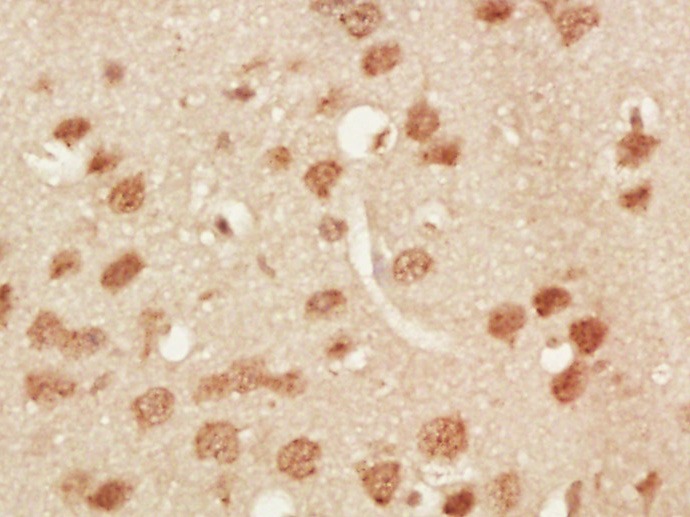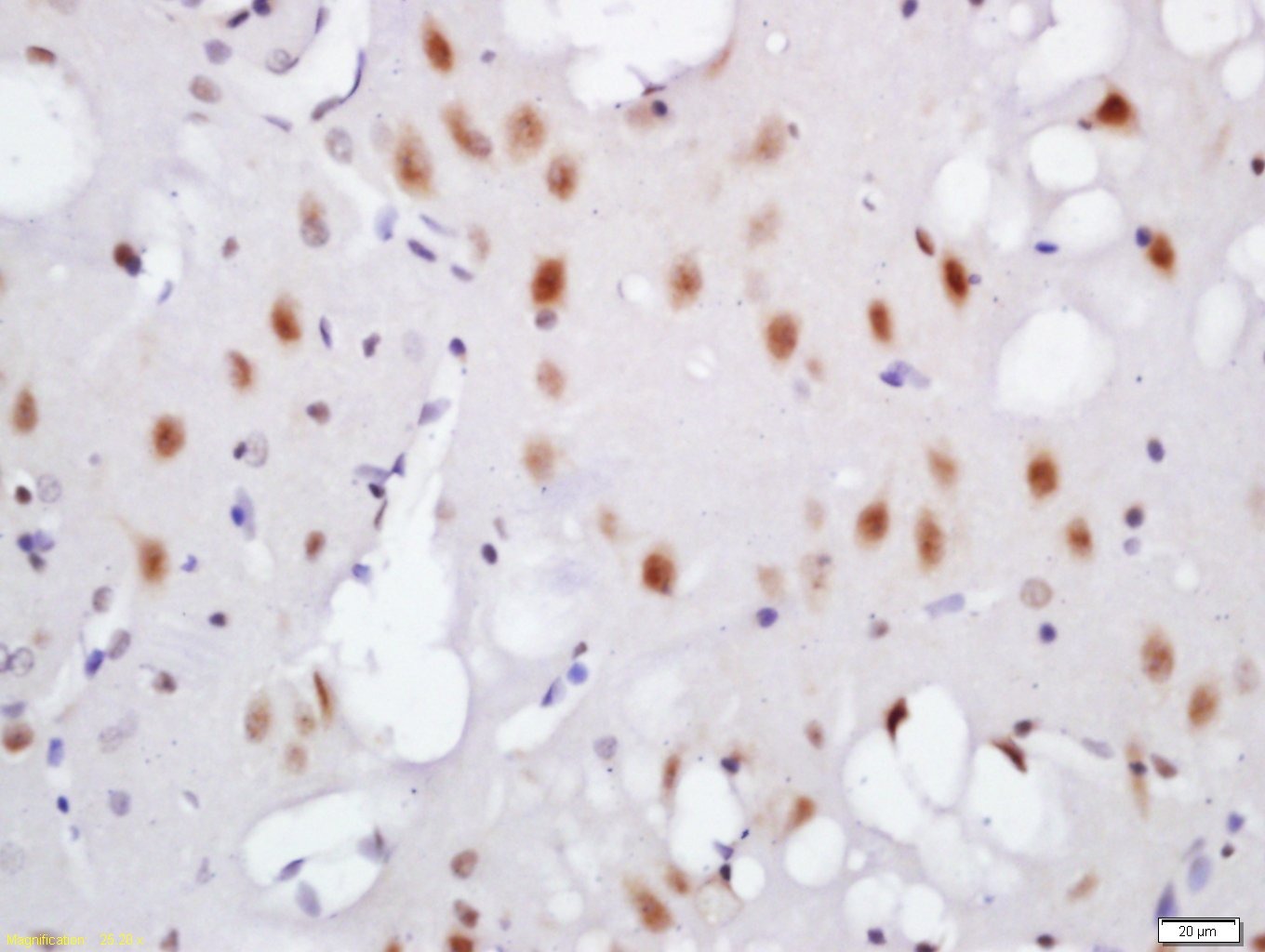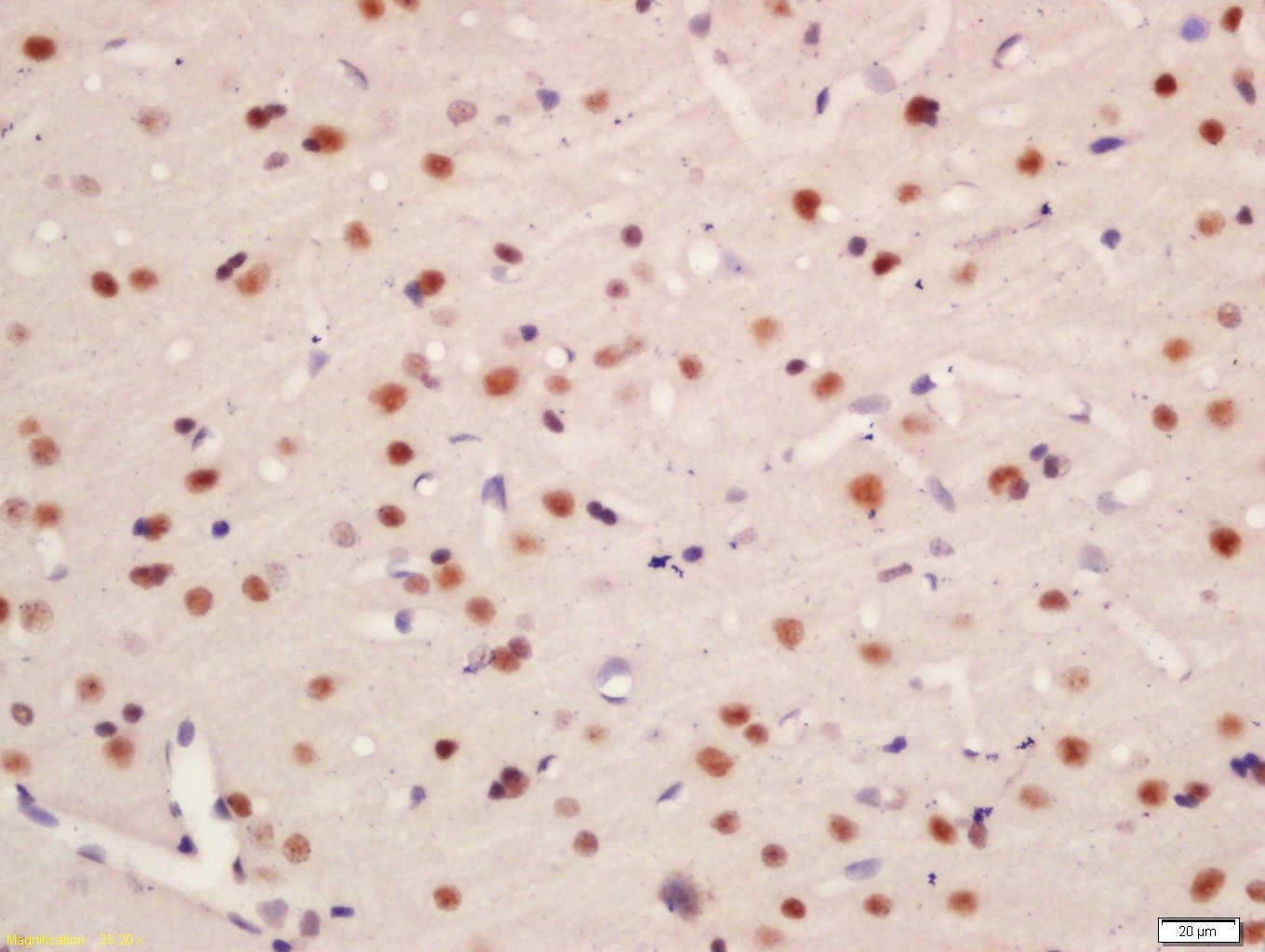Shopping Cart
Remove All Your shopping cart is currently empty
Your shopping cart is currently empty
Anti-Phospho-TNIK (Ser764) Polyclonal Antibody is a Rabbit antibody targeting Phospho-TNIK (Ser764). Anti-Phospho-TNIK (Ser764) Polyclonal Antibody can be used in IF,IHC-Fr,IHC-P.
| Pack Size | Price | USA Warehouse | Global Warehouse | Quantity |
|---|---|---|---|---|
| 50 μL | $222 | 7-10 days | 7-10 days | |
| 100 μL | $374 | 7-10 days | 7-10 days | |
| 200 μL | $529 | 7-10 days | 7-10 days |
| Description | Anti-Phospho-TNIK (Ser764) Polyclonal Antibody is a Rabbit antibody targeting Phospho-TNIK (Ser764). Anti-Phospho-TNIK (Ser764) Polyclonal Antibody can be used in IF,IHC-Fr,IHC-P. |
| Synonyms | TRAF2 and NCK-interacting protein kinase, Traf2 and NCK interacting kinase, TNIK (p-Ser764), TNIK (p-S764), TNIK, RGD1561817, p-TNIK (Ser764), p-TNIK (S764), MGC189859, MGC189819, KIAA0551, C630040K21RIK, C530008O15Rik, AI451411, 4831440I19RIK, 1500031A17RIK |
| Ig Type | IgG |
| Reactivity | Mouse,Rat (predicted:Human,Dog,Pig,Cow,Horse) |
| Verified Activity | 1. Paraformaldehyde-fixed, paraffin embedded (Mouse brain); Antigen retrieval by boiling in sodium citrate buffer (pH6.0) for 15 min; Block endogenous peroxidase by 3% hydrogen peroxide for 20 min; Blocking buffer (normal goat serum) at 37°C for 30 min; Antibody incubation with (phospho-TNIK (Ser764)) Polyclonal Antibody, Unconjugated (TMAB-01523) at 1:400 overnight at 4°C, followed by a conjugated secondary antibody for 20 min and DAB staining. 2. Tissue/cell: mouse brain tissue; 4% Paraformaldehyde-fixed and paraffin-embedded; Antigen retrieval: citrate buffer (0.01M, pH6.0), Boiling bathing for 15 min; Block endogenous peroxidase by 3% Hydrogen peroxide for 30 min; Blocking buffer (normal goat serum) at 37°C for 20 min; Incubation: Anti-phospho-TNIK (Ser764) Polyclonal Antibody, Unconjugated 1:200, overnight at 4°C, followed by conjugation to the secondary antibody and DAb staining. 3. Tissue/cell: rat brain tissue; 4% Paraformaldehyde-fixed and paraffin-embedded; Antigen retrieval: citrate buffer (0.01M, pH6.0), Boiling bathing for 15 min; Block endogenous peroxidase by 3% Hydrogen peroxide for 30 min; Blocking buffer (normal goat serum) at 37°C for 20 min; Incubation: Anti-phospho-TNIK (Ser764) Polyclonal Antibody, Unconjugated (TMAB-01523) 1:200, overnight at 4°C, followed by conjugation to the secondary antibody and DAb staining.    |
| Application | |
| Recommended Dose | IHC-P: 1:100-500; IHC-Fr: 1:100-500; IF: 1:100-500 |
| Antibody Type | Polyclonal |
| Host Species | Rabbit |
| Subcellular Localization | Nucleus. Cytoplasm. Recycling endosome. Cytoplasm, cytoskeleton. Note=Associated with recycling endosomes and the cytoskeletal fraction upon RAP2A overexpression. |
| Tissue Specificity | Expressed ubiquitously. Highest levels observed in heart, brain and skeletal muscle. Expressed in normal colonic epithelia and colorectal cancer tissues. |
| Construction | Polyclonal Antibody |
| Purification | Protein A purified |
| Appearance | Liquid |
| Formulation | 0.01M TBS (pH7.4) with 1% BSA, 0.02% Proclin300 and 50% Glycerol. |
| Concentration | 1 mg/mL |
| Research Background | TNIK is a MSN protein kinase that interacts with both TNF receptor-associated factor 2 (TRAF2) and the adapter protein NCK. The protein has been shown to activate the c-Jun N-terminal kinase pathway when over expressed in Phoenix-A cells. TNIK has been shown to phosphorylate gelsolin, the principal intracellular and extracellular actin-severing protein, in vitro. This and evidence from mutational studies suggest that TNIK functions in the regulation of the cytoskeleton. Northern analysis indicates TNIK expression in human heart, skeletal muscle, and brain, with lower levels of expression in kidney, liver, lung, and pancreas. ESTs have been isolated from human tissue libraries, including normal amnion, gallbladder and skin. |
| Immunogen | KLH conjugated Synthesised phosphopeptide: human TNIK around the phosphorylation site of Ser764 |
| Antigen Species | Human |
| Gene Name | TNIK |
| Gene ID | |
| Protein Name | TRADD |
| Uniprot ID | |
| Biology Area | Other Enzymes,Other Kinases |
| Function | Serine/threonine kinase that acts as an essential activator of the Wnt signaling pathway. Recruited to promoters of Wnt target genes and required to activate their expression. May act by phosphorylating TCF4/TCF7L2. Appears to act upstream of the JUN N-terminal pathway. May play a role in the response to environmental stress. Part of a signaling complex composed of NEDD4, RAP2A and TNIK which regulates neuronal dendrite extension and arborization during development. More generally, it may play a role in cytoskeletal rearrangements and regulate cell spreading. Phosphorylates SMAD1 on Thr-322. |
| Molecular Weight | Theoretical: 150 kDa. |
| Stability & Storage | Store at -20°C or -80°C for 12 months. Avoid repeated freeze-thaw cycles. |
| Transport | Shipping with blue ice. |
| Size | Quantity | Unit Price | Amount | Operation |
|---|

Copyright © 2015-2026 TargetMol Chemicals Inc. All Rights Reserved.